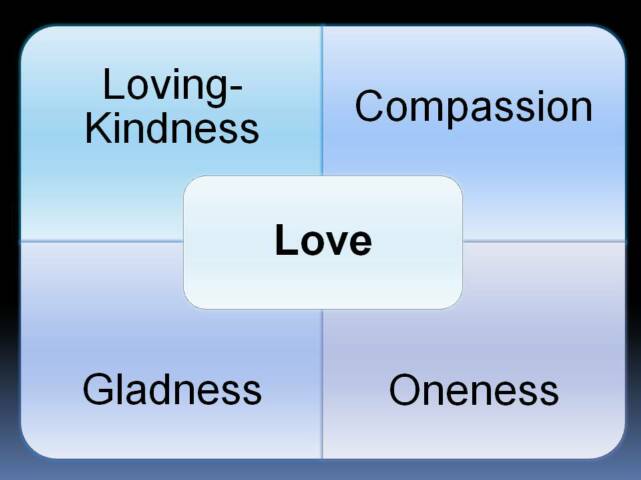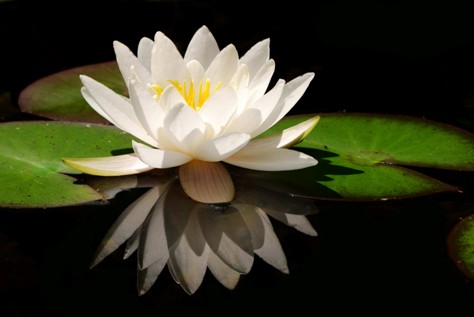
SOUL RESEARCH INSTITUTE
(866)-397-6939, 719-488-0548, 303-507-5169

SEARCH
What is Love
Once a child asked the angels, “What is heaven?”
The angels replied,
“My dear one, Heaven is none other than
the Heart which is filled with LOVE.”
The child then asked, “What is hell?”
The angels replied, “My dear one, Hell is none other than
the Heart which is empty of LOVE.”
Do you ever wonder what is “Heart” and what is “LOVE?”
If you do and if you contemplate, you will begin to realize that LOVE is essentially an “emotion” which is felt in our “Heart.” You will also begin to realize that ‘Heart’ is simply a word that we use to collectively and figuratively denote our embodiment (body-mind-consciousness) in which we feel the emotion (of LOVE).
If you continue your contemplation, you will then begin to realize that, that feeling or emotion (of LOVE) is essentially a state of abiding in which there is no hatred. If you realize that LOVE is primarily the absence of hatred, and, with that understanding, if you further your contemplation, you will begin to realize that LOVE is also essentially a state of abiding in which there is no greed. Once you understand that LOVE is the absence of hatred as well as greed, then, automatically, deep contemplation and mental absorption will arise in you, and if you are lucky, you will then realize that LOVE is ultimately a state of abiding, a state of living, in which there is no delusion: no ego; no sense of ‘I.’
So, now you know that LOVE is essentially and ultimately that state of abiding in which there is no hatred, greed, and delusion. The next question then arises, “what exactly it means to have no hatred, no greed, and no delusion?”
When you confront such a question and when you observe and experience the emotions of LOVE closely and consistently, you begin to understand that LOVE is not only the absence of hatred, greed, and delusion but also the presence of Non-hatred, Non-greed, and Non-delusion. Why? Because, based on your experience, you know that the mere absence of hatred does not necessarily make you feel loving; you have to actively ‘love’ to feel loving. This active parameter of ‘loving’ arises out of Non-hatred, Non-greed, and Non-delusion.
Thus, finally, following two realities about LOVE dawn upon you:
1. LOVE is the absence of Hatred, Greed, and Delusion, and
2. LOVE is the presence of Non-Hatred, Non-Greed, and Non-Delusion.
If you continue your observation and contemplation, then you automatically start looking for the elements –the intrinsic universal phenomena which can facilitate the manifestation of the above two realities and bring about the real experience of LOVE. These intrinsic universal phenomena which bring about the real experience of LOVE are what I call the “Elements of LOVE.”
Copyright 2008 SOUL Research Institute
C





LOVE



The Elements of Love
Pragmatically speaking, Loving-Kindness, Compassion, Gladness, and Oneness (aptitude of equanimity) are the four elements of LOVE, in that order of increasing significance.
Why these four elements? Because, it is these elements which not only facilitate the eradication of Hatred, Greed, and Delusion, but also facilitate the establishment of Non-hatred, Non-greed, and Non-delusion, all at the same time! Therefore, when these four elements arise interdependently and interact with each other, they give rise to the experience of true authentic LOVE.
Loving-Kindness is the first element of LOVE. It can be simply defined as the ability to see oneself and others as worthy of love and kindness.
Compassion is the second element of LOVE. It can be simply defined as the ability to see suffering in oneself and others and to alleviate that suffering.
Gladness is the third element of LOVE. It can be simply defined as the ability to notice and appreciate goodness in oneself and others and to derive joy from that.
Oneness is the fourth element of LOVE. It can be simply defined as the ability to see all as equal; the ability to experience egolessness, selflessness; the aptitude for equinimity.
Figuratively speaking, just as the elements of carbon and hydrogen interact with each other and generate hydrocarbons, these four elements interact with each other (and with body and consciousness) and generate the experience or the phenomenon of LOVE
LOVE is obviously not a substance like hydrocarbons, but strictly a non-material phenomenon, an experience, which arises in dependence of the body, the mind, and the consciousness (collectively known as the embodiment). The mind is primarily the bundle of four elements of LOVE which we just defined.
Loving-kindness
Loving-kindness is a mental phenomenon which has the characteristic of removing hatred and developing non-hatred. Its function is to choose welfare over harm. It is manifested as the removal of animosity, hostility, enmity, ill feelings and ill will. Its proximate cause is “considering all living creatures as friendly and worthy of love and kindness.”
Because Loving-kindness removes hatred and associated unwholesome emotions, it is considered as a great purifier of the contaminated human consciousness. Loving-kindness is like a fragrance that removes the disgusting smell of hatred, irritation, anger, etc. It is like a cool breeze that removes hot air.
Loving-kindness should not be understood as mere ‘absence of hatred’ but also as the ‘opposite of hatred’ or as that by means of which one can get rid of hatred. A person who is not hateful does not necessarily become loving, kind, gentle, and agreeable. It is Loving-kindness that makes one so. Similarly, mere absence of hatred does not remove irritation, frustration, anger, etc. It is Loving-kindness by means of which one can shake off these defilements. It is due to Loving-kindness that one becomes cool and loving. Thus, the element of Loving-kindness actually serves as a ‘reason’ or ‘root cause’ for the arising of love-consciousness.
The easiest way to arouse love is to develop loving-kindness towards near and dear ones as wells as towards those who are hateful and who have been unfair to us. The moment we genuinely consider any person as someone who is worthy of our loving-kindness, love arises and cools down the anger and resentment. One can experientially understand this by applying it while having a heated argument with the spouse.
If we cannot easily arouse loving-kindness due to our temperament, then we need to first develop the ‘will,’ the character-strength, the motivation and the spirit for greatness. We need to combine this ‘will’ with ‘vigor’ and ‘resolution’ and make the practice of loving-kindness as an ascetic practice, which means, we do not allow, at any cost, hatred to overcome us and we do not dwell into hatred if it arises. We give the practice of loving-kindness ‘a sense of urgency.’ We become resolved about its benefits and so we completely let-go of our mind onto loving-kindness. We liberate the mind from indecisiveness about loving someone. Such resolution can arise in us only when we are certain and ‘convinced’ about the benefits of loving-kindness. We need such resolution because it provides decisive and unshakable support to difficult but wholesome mental action of loving someone who is not quite lovable.
The practice of loving-kindness is real asceticism, because, it is extremely difficult to love someone who is not lovable. Such asceticism is not same as sacrifice or self-suicide.
Angry and hateful people generally don’t look good, at least when they are under the spell of anger. It is the very nature of hatred to make things look ugly, unattractive, and ill-flavored. Even most adorable children look ugly when they are upset. On the other hand, people who consistently avoid conflict and people who practice loving-kindness generally develop pleasing appearance. We feel at ease in the presence of such people. Their company is enjoyable. These are the people who are actually reaping the fruits of Loving-kindness.
Compassion
Compassion is a mental phenomenon which has the characteristic of developing a wholesome desire for alleviating other’s suffering. Its function is to make it possible to identify suffering in others and to not ignore it. It is manifested as the removal of meanness and cruelty and the establishment of peace. Its proximate cause is “considering living creatures as those who are inherently suffering.”
It is thus compassion because it makes it possible to see and feel suffering of others and because it promotes the eradication of suffering in us and others and the development of peace.
The power of compassion can be tested by arousing it for one’s worst enemy and noticing how quickly it cools down the fire of hatred and cruelty. While dealing with a hostile person, if we arouse compassion, it makes us look at the hostile person as someone who is suffering from diseases of anger, hatred and ignorance. Because of such compassionate outlook, we feel relaxed and calm (instead of experiencing the burning heat of anger) which results in an intense urge to alleviate the suffering of the other person. The element of Compassion thus makes it possible to see suffering of others and inclines us to remove that suffering. So, instead of reacting to someone’s hostility, we act with sympathy, empathy, consideration and kindness. Compassion not only makes us non-hostile towards the other person but also makes the other person non-hostile towards us. Due to compassion, we thus win the war for both parties.
Compassion should not be misunderstood as that which generates sorrow, grief and sadness. The marvelous quality of compassion becomes clearer as we develop and mature in loving-kindness.
Loving-kindness arises when we see others as lovable. So, it is very difficult to arouse it when we deal with a hostile or evil person. However, compassion arises when we see others as beings in suffering. So, it is very easy, almost natural, to arouse it when we deal with a hostile or evil person. When there is compassion in mind, hostility or evil deeds are seen as the mark of suffering resulting from greed, hatred, delusion and other unwholesome mental elements. And, once compassion arises, it naturally awakens loving-kindness, and together, they support us in maintaining peace and harmony during difficult or extremely difficult situations such as robbery, physical violence, murder, etc.
So, when someone is angry at you, arouse compassion for that person first and then let loving-kindness seep in. When you are angry at someone you don’t like, arouse loving-kindness for yourself first, and then let compassion seep in. In this way, together, let compassion and loving-kindness engulf you and others in all life situations. Let goodwill, welfare, friendliness, non-hatred, non-meanness and peace prevail at all times, at any cost.
The purpose of practicing compassion is to get rid of meanness by inclining to alleviate other’s suffering. Why so? Because it is impossible to be mean or callous and be compassionate at the same time. The purpose is not to feel sad about somebody’s suffering or to generate sorrow about pain and suffering of human life. The purpose is not to generate pity about others who are less fortunate.
Compassion is not about feeling sad, sorrowful or pitiful. These are near-enemies of compassion. In order to avoid such failures, we have to protect our compassion from these near-enemies by arousing the other two elements of LOVE: Gladness and Equanimity.
Gladness
Gladness is a mental phenomenon which has the characteristic of noticing goodness in others and appreciating and feeling joyful when others are successful. Its function is to remove envy, boredom, and discontent. It is manifested as non-aversion. Its proximate cause is noticing others’ goodness, successes, and accomplishments.
The power of gladness can be tested by arousing it whenever there is a sense of aversion or envy towards anybody. While dealing with our highly successful friends or family members or competitors, if we arouse gladness, we begin to appreciate their successes which results in pleasantness and happiness. This happens because gladness does not allow jealousy or envy to take hold; instead, it permeates the consciousness with appreciative joy and makes us feel good.
Similarly, we can use the power of gladness to deal with boredom or aversion which generally arises in common people while dealing with others’ successes. By simply contemplating on successes of all the people we can think of (by arousing the element of Gladness), we can quickly get rid of boredom or aversion. Gladness should not be misunderstood as that which simply generates cheerfulness without the removal of aversion. The divine quality of gladness is much deeper and exquisite than briefly discussed here. It becomes clearer and clearer as we develop and mature in loving-kindness and compassion.
Oneness
(Aptitude of Equinimity)
Oneness is a mental phenomenon which has the characteristics of promoting balance, non-attachment (and not detachment), and impartiality towards others. Its function is to abandon interestedness in any particular person including the self and to see and treat all as equal, and thereby bring perfection to love through ultimate transcendence. It is manifested as neutrality of mind which is attributed to overcoming of liking and disliking, approval and resentment, craving and aversion, and the experiencing of real peace and happiness.
It is best to try to practice virtues, abstinences, mindfulness, concentration, non-reaction, giving wise attention, loving-kindness, compassion, gladness, etc to arouse oneness. In fact, oneness arises as the outcome of consistent development of these wholesome mental elements and in turn, strengthens these elements and alleviates the chances of their failure.
For developing and maintaining oneness, one should avoid the company of prejudiced people. One should avoid over-enthusiasm. One should neutralize one’s perceptions and cognition. One should neither agree nor disagree. One should be non-opinionating, never expecting gifts or rewards, secluding oneself and consistently inclining the mind towards equality and neutrality. Above all, one should develop the habit of ‘letting-go.’
It is important to understand that one is able to abide in oneness only because one practices loving-kindness-compassion-gladness towards other people. If there is no foundation of loving-kindness-compassion-gladness, one cannot experience oneness.
Oneness can only make us an equanimous person. These practices can only make us impartial, unprejudiced and neutral towards all beings, including ourselves. These practices can only help us break down all the barriers by helping us see all (including ourselves) equally. When we are matured in the practice of loving-kindness-compassion-gladness and when equanimity arises out of that, we no longer have any friends or enemies. We no longer love someone more than the other. We simply become neutralized due to transcending all differences and discriminations. We simply become like ‘space’ which is impartial towards all beings and all formations and yet it encompasses all beings. If space were the ‘body’ of an equanimous person, then oneness would be that person’s ‘mind.’

Spectrum of Love
Just as the elements of hydrogen and carbon join together in different permutations and combinations to give rise to various types of hydrocarbons (such as crude oil, petroleum, rocket fuel, etc), the four elements of LOVE arise in different intensities to give rise to various types of love experiences. These love experiences range from crude form of romantic love or the love of worldly-relationships to refined form of transcendental love to the pure form of perfect love. I like to call this range of love experiences as the “Spectrum or Pyramid of Love.”
Love ranges from the lowest form of “Worldly-Love” to the highest form of Perfect-Love.”
The easiest and quickest way to understand and remember the spectrum or Pyramid of love is to grasp the expression which corresponds to that particular form of love (See Slide).
Worldly Love
Expression: “I love You.”
Such type of love is present in relationships between a man and a woman, or, between any two individuals. It is mostly unwholesome in nature because it cannot occur without the presence of greed and delusion. In relationships that are made of worldly-love, greed is manifested as attachment, passion, possessiveness, and possibly lust; and delusion is manifested as a sense of “I” and “You.” There is also a strong overriding sense of being a “lover” or a “beloved.” In fact, in this form of love, it makes it necessary to have such a sense of separation.
In worldly-love, there is also a great possibility of the presence of hatred, conceit, envy, worry, and doubt. Because of this, such type of love causes great suffering and pain, which is very obvious in so-called “love relationships” that do not last for long. If we notice any amount of unhappiness in our “love relationship,” we should realize that we are abiding in worldly-love which is the lowest form of love.
Religious Love
Expression: “I love my God.”
Such type of love is present between a believer and a believed God. Note that I am saying “believed God” and not a “beloved God.” Religious-Love is most widely prevalent among religious people and religious leaders who develop tremendous attachment to God of their religion because of their beliefs, tradition, or culture. Religious worship, religious rituals, religious prayers, and religious-mythological art and literature are examples of the manifestation of religious-love.
This form of love is much more purified than worldly-love, because in religious-love, the mental elements and formations of lust, fear, conceit, envy, worry and doubt are much weaker or sometimes even absent. However, mental elements of hatred, greed, and delusion are always present.
In religious-love, greed is manifested as an attachment to the religious God. Greed is also manifested in god worship that is done for gaining worldly blessings, fortunes, powers or a place in the God’s abode. Hatred is manifested as dislike or aversion to the God of other religions. Hatred is also manifested as anger and violence that occurs between people of different religions. Delusion is manifested as blind faith and religious beliefs. At a subtle level, delusion is also manifested as a deep sense of separation from the God. That is why religious people perceive God as an overpowering and judging entity separate from the human world.
If hatred is present in combination with greed and delusion, then, religious-love can turn into fanaticism and extremism. Such unwholesome mental phenomena are responsible for many religious wars, crusades, sacrificial suicides, and forceful missionary work. It is therefore important to understand that religious-love, even though far superior to worldly-love, is not at all foolproof. Therefore, if right understanding is not present, religious-love can become a great hindrance on the path of spiritual evolution.
Religious-love can become wholesome if it arouses love for the “divine qualities” of the “believed” God, or, if it arouses love for “divinity” and not for the “powers” of god. If there is love for divinity and if religious God becomes a source of inspiration, then, religious-love can greatly contribute to the process of wholesome mental development.
Devotional Love
Expression: “I love God.”
Such type of love is present between a devotee and a beloved God. Note that I am saying “beloved God” and not a “believed God.” Also, note the subtle difference between expressions of religious-love and devotional-love: in devotional-love, there is no my god but just god.
Devotional-love is present in idol worshipers, poets, mystics, wanderers, religious philosophers, etc, who develop a bond, a personal relationship, with their personal deity or personal god. Devotional worship, devotional prayers, devotional art and literature, feelings of exaltation, and ecstasy are examples of the manifestation of devotional-love.
This form of love is much more purified than religious-love because the mental elements of hatred, conceit, envy, worry and doubt are mostly absent. However, devotional-love is still not entirely wholesome because the elements of greed and delusion are always present. Greed is manifested as attachment to the personal deity and as cravings for devotional ecstasy, darshans, salvation, or a place in the God’s abode. Delusion is manifested as blind faith and ritualistic worship. Delusion is also manifested as a sense of separation from the God even though there is a strong sense of a merger between the “lover (a devotee)” and the “beloved (a personal god).” In fact, many devotional people feel that they have eradicated their ego by completely surrendering to their personal god. However, because of delusion, they do not realize that the personal ego is not eradicated but simply shifted to the entity of God.
In devotional-love, the element of hatred is absent. This is the main difference between religious-love and devotional-love. Even then, it is important to understand that devotional- love is not foolproof, because it can get easily contaminated with religious emotions and overstretching of mind. Therefore, if right understanding is not present, devotional-love can become a great hindrance on the path of spiritual evolution.
Devotional-love can become wholesome if it arouses love for the “divine qualities” of God, or, if it arouses love for “divinity” and not for the “beauty” of god. If there is love for divinity and if the personal God becomes a source of inspiration, then devotional-love can greatly contribute to the process of purification and evolution of LOVE.
Beautiful Love
Expression: “I am in love with myself and the whole world.”
When worldly-love, religious-love, or devotional-love is greatly purified of all unwholesome mental elements, it becomes beautiful-love. The prominent mark of beautiful-love is the complete absence of aversion, passion, and lust. Passion and lust are finished forever. It is over and done with. The root elements of greed, hatred, and delusion still exist but not in a governing state. In beautiful-love, these unwholesome elements no longer give rise to unwholesome reactions.
Such type of love is mostly present in great philosophers, poets, dedicated social workers, humanitarians, philanthropists, artists, saints, monks, seers, sages, etc. Selfless social service, art work, spiritual missionaries, extraordinary spiritual literature, etc, are examples of the manifestation of beautiful-love.
This is the form of love that provides the best opportunity to boost the speed of our spiritual evolution. At the same time, it is important to understand that, if we get stuck in the pleasantness of beautiful-love, we remain there forever and do not grow.
Transcendental LOVE
Expression: “I am Love.”
Such type of love is best known as the “love-consciousness.” It is primarily present in saints, mystics, monks, seers, sages, etc. These people constantly abide in love- consciousness which always arises with four elements of Loving-kindness, Compassion, Gladness, and Equanimity. It is called transcendental-love because of the predominance of these four elements of LVOE. Love-consciousness or transcendental-love is the most obvious manifestation of divine-love.
In transcendental-love, there remains no separation between the lover and the beloved; however, a very subtle sense of being a lover still exists. None the less, such love is pure-love, unconditional-love, true-love. It is pure because there is no trace of greed in it and the elements of Non-greed and Non-hatred serve as its roots. It is unconditional because there is no sense of separation in it except the seed or latent form of ego which exists due to not-yet-fully-developed element of Non-delusion. It is Real-love because it really is love in the truest sense.
Transcendental-love changes our lineage. There is no turning back from transcendental-love. From here on, we can no longer fall in love. We can only rise in love. When we are established in transcendental-love, our enlightenment (perfection in Love) becomes a guarantee, because we automatically enter the stream of enlightenment.
Noble-Love
Expression: “Love is an impermanent and selfless phenomenon; Love is Love.”
As we abide in love-consciousness and as transcendental-love matures, a resolution arises in us for transcending love itself. A resolution arises for wisdom and enlightenment. This resolution is the “noble faith” which basically emerges as the clarified vision to go beyond existence where there is neither abiding nor non-abiding. It is called noble because it arouses love for nobility and transcendence. It is called noble faith because it is resolute and decisive, and it clarifies the vision for transcending. Therefore, transcendental-love can also be understood as noble-love.
In transcendental/noble-love, three noble mental elements of Right action, Right occupation, Right speech (see note 9) and the mental element of Non-delusion are predominant. Renunciation, dispassion, purified vision, monk-hood are some of the marks of noble-love. Bodhisattvas and Real Yogis are examples of noble lovers.
While we abide in noble-love, we are sustained by noble faith which eventually becomes a spiritual faculty and governs our way of living. Consequently, we begin to live nobly. In this way of living, all actions, reactions, non-action, events, circumstances, situations, things, etc, are lived, viewed, and experienced as impermanent and selfless phenomena of body-mind-consciousness. Every moment of abiding is now used as a meditative moment for the realization of impermanence and selflessness. Every moment is now dedicated for the realization of pure understanding, wisdom, and enlightenment. Every moment of abiding now becomes a moment of purification and insight. Every moment of abiding thus results in the eradication of ‘I’ or ‘self-centeredness.’
As noble-love evolves and matures into perfect-love (Ananda), some incredibly penetrative wisdom arises in us and we experientially begin to understand that:
• All existence, all abiding, all living is inherently imperfect because it is inherently contaminated with self-centeredness: a sense of self – the “I.”
All existence, all abiding, all living is inherently imperfect because it is inherently contaminated with self-centeredness: a sense of self – the “I.”
• When there is self-centeredness, no matter how subtle, suffering always arises. Self-centeredness (the “I”), no matter how subtle, is the cause of all existence, and consequently-arisen imperfections and suffering.
When there is self-centeredness, no matter how subtle, suffering always arises. Self-centeredness (the “I”), no matter how subtle, is the cause of all existence, and consequently-arisen imperfections and suffering.
• Eradication of “I” ultimately eradicates all imperfections and all suffering.
Eradication of “I” ultimately eradicates all imperfections and all suffering.
• Evolving and perfecting our love is the pragmatic way to live here and now for realizing the complete eradication of “I”, for the arising of perfection, and for the end of all suffering.
Evolving and perfecting our love is the pragmatic way to live here and now for realizing the complete eradication of “I”, for the arising of perfection, and for the end of all suffering.
Perfect Love
(No Expression)
As we begin to establish ourselves in such wisdom, the mental element of Non-delusion begins to hold roots and becomes stronger. To the extent Non-delusion is developed and strengthened, to that extent transcendental-love and noble-love is purified of the latent seeds of delusion (subtle I-ness). Eventually, when Non-delusion is fully established, all traces of subtle “I” are removed from the consciousness. This is when everything is transcended, including the subtlest sense of being a seeker or a lover. There now remains no lover, no beloved, and no seeker separate from the phenomenon of love. What then arises is pure awareness, pure consciousness.
At this stage, love is experientially understood as an impermanent and selfless phenomenon; love is experienced as just love, and there exists just this abiding in pure awareness without clinging to the experience or understanding. Such abiding is perfect-love (Ananda). It is the culmination of mental evolution. It is the end of the path of perfection.
Only enlightened masters abide in perfect-love: the selfless abiding; the perfect abiding; the perfect way of living. As long as we continue to evolve in our love, we will have the potential for that perfect abiding, that perfect way of living. This is the ultimate potential we, as human beings, have, and it can be awakened only by evolving our love.
As our ego reduces, our love increases, and, when our ego is completely exterminated, we become perfect lovers.
Ego is indirectly proportional to Love. Less and less ego means more and more love.
“Evolving our love” is the pragmatic and most effective way of awakening our ultimate potential.
For further reading, check out the following book in 2010-11.

THE ELEMENTS OF
LOVE
Sam Adettiwar





